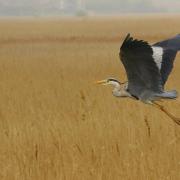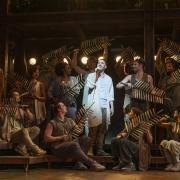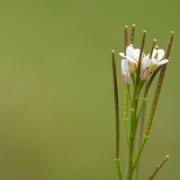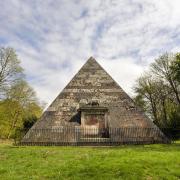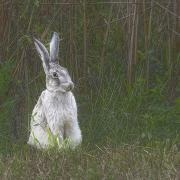The stark, unsettling, battle-scarred landscapes of one of the most important British artists of the 20th century are the focus of a major exhibition opening in Norwich

The white glow of the moon, diffused through mist, picks out the jagged edges of a cliff. Far below the sea shifts and shimmers, but across the flat land at the top of the cliff looms the dark shadow of a cloaked woman.
The painting, by Paul Nash, was created after a visit to Mundesley more than a century ago. Soon he would become renowned as a war artist, painting bleak, brutal, beautiful pictures of the nightmarish destruction and desolation in the battlefields around Ypres and Passchendaele.
He was an official artist of both world wars, his landscapes communicating the terrible toll of conflict through nightmarish visions of sharp, oppressive, mechanical shapes, and a darkness pierced by skeleton-white searchlights. Several of these iconic paintings will be on show at the Sainsbury Centre for Visual Arts from Saturday, April 8, alongside British landscapes, which although anchored in history and painted in peacetime, are futuristic, stark and unsettling.
The Cliff to the North was painted in response to Nash’s 1912 trip to Mundesley. “We walked in a landscape entirely new to my eyes, flat and chequered, with all the trees slanting one way, their branches welded together in tortuous forms by the relentless winds,” he remembered.

The exhibition, organised by Tate Britain, spans Nash’s career from his earliest drawings to his death in 1946, and includes the leafless, splintered tree trunks rearing from grave-like mounds and shell holes of Nash’s 1918 masterpiece We Are Making a New World, the hellish landscape of the 1919 The Menin Road and, from 1941, Totes Meer (Dead Sea), showing the wrecked and twisted remains of planes contorted into the waves of a metal sea.
Between the wars Nash shaped ancient British landscapes of standing stones and burial mounds into surrealist images. He was fascinated by history and the exhibition also includes Nash’s illustrations for a 1931 edition of the book by 17th century Norwich polymath Sir Thomas Browne, written after the discovery of ancient burial urns near Walsingham.
Given the chance to choose any book to illustrate, he produced a series of drawings, watercolours and oils on Browne’s masterpiece around the themes of death and burial. But as well as looking back to the distant past, and capturing the devastation wrought by war in his lifetime, Nash was also a key figure in the development of modern British art, and a founding member of Unit One, a group of British modernist artists including Barbara Hepworth and Henry Moore.
The Sainsbury Centre show, which runs from April 8 until August 20, is curated by Emma Chambers of the Tate and is the largest exhibition of Nash’s work for many years. On Thursday, May 18, Emma will give a lecture at the gallery exploring Nash’s work from early dream-like moonlit drawings, through the terror and despair of the war images to strange, surreal, half-imagined, half-recorded mystical moonlit landscapes – and huge flying flowers.





